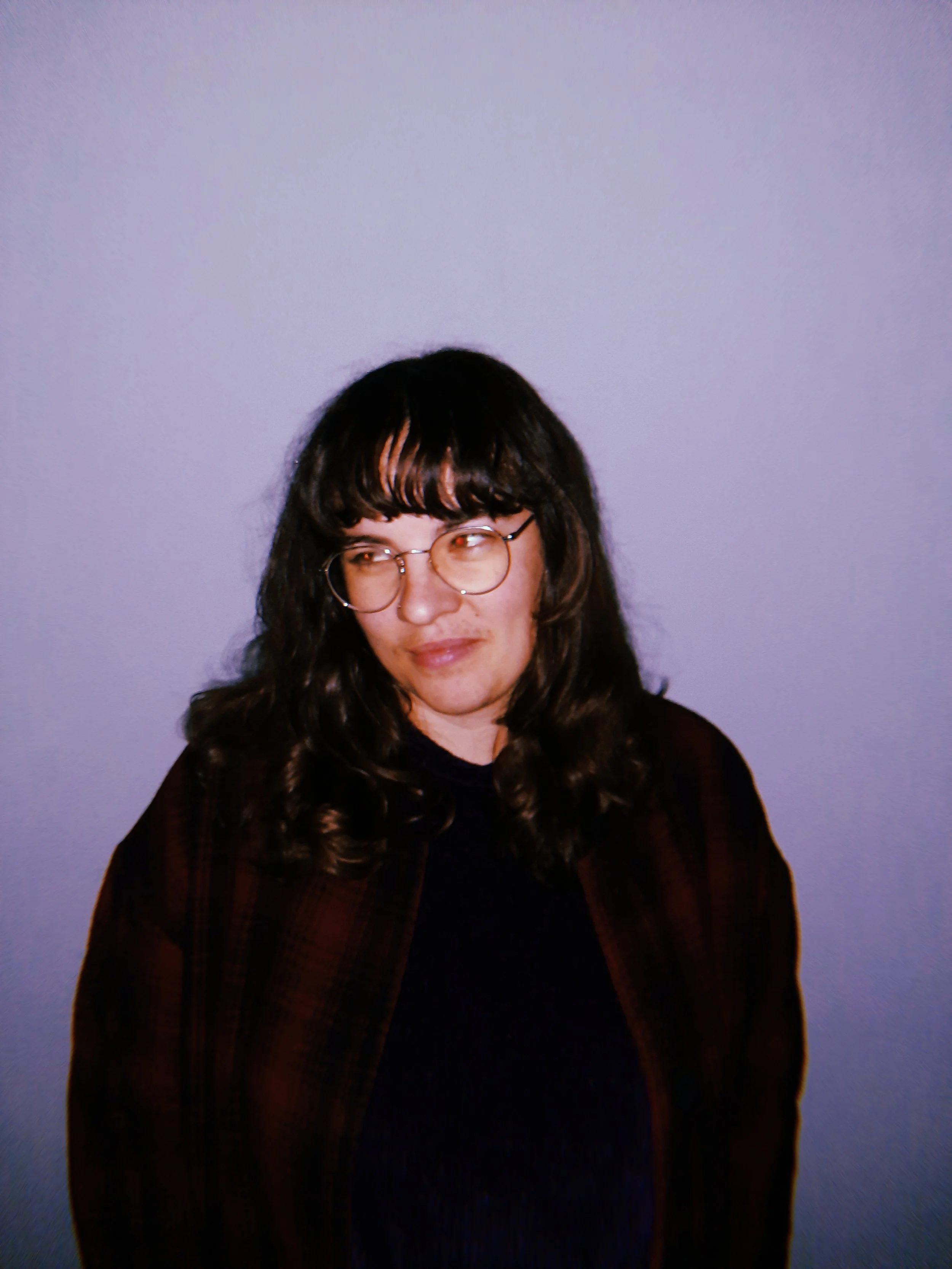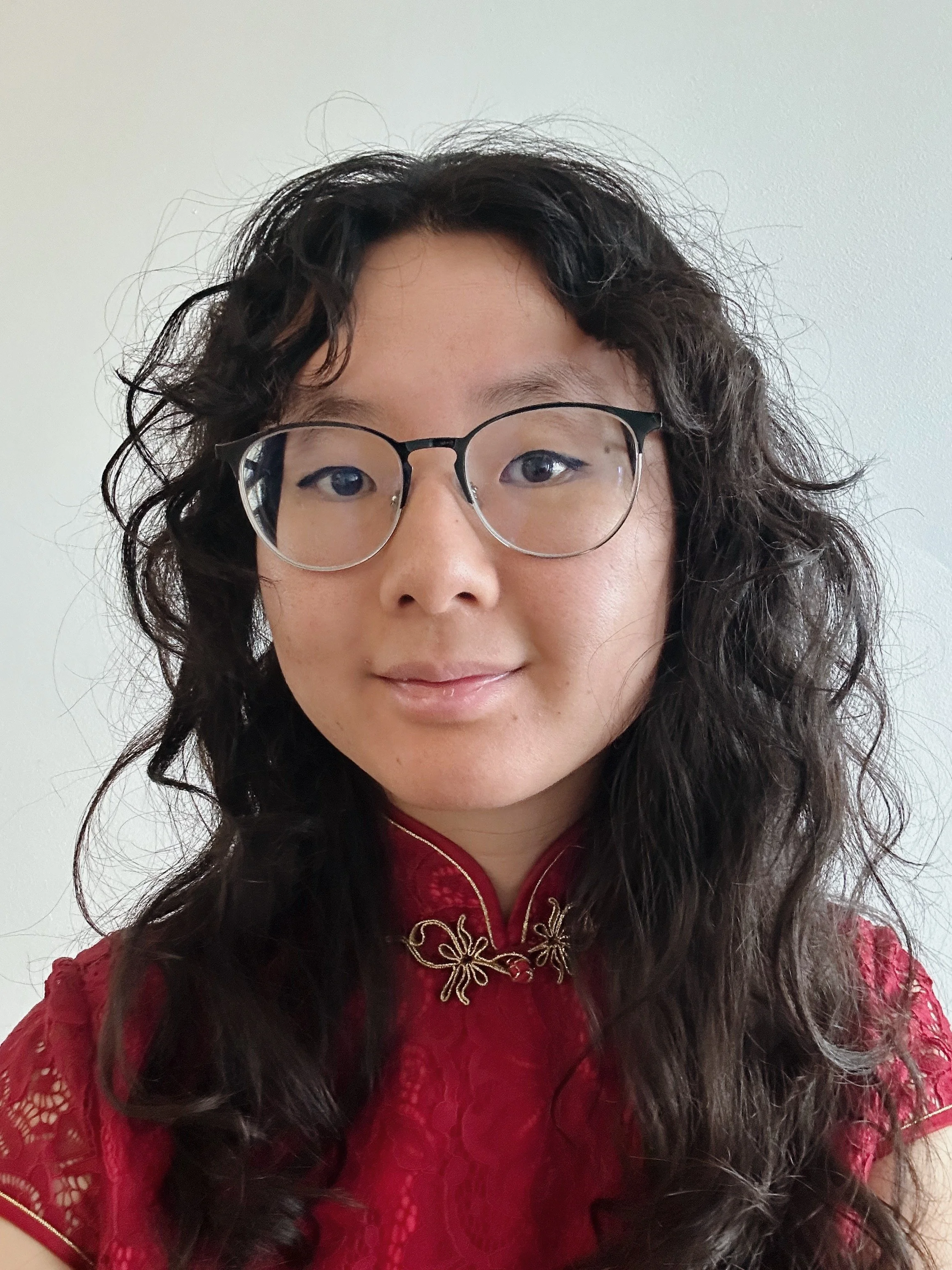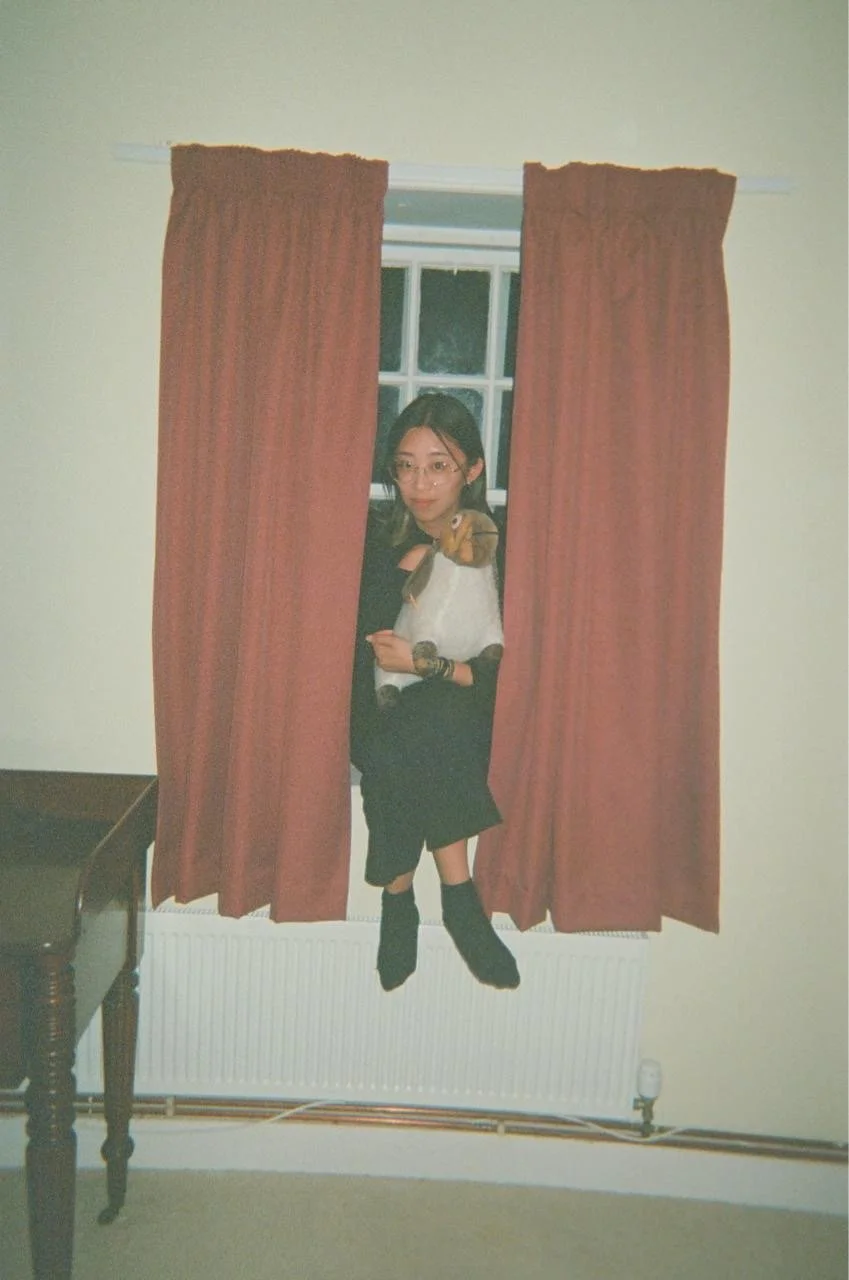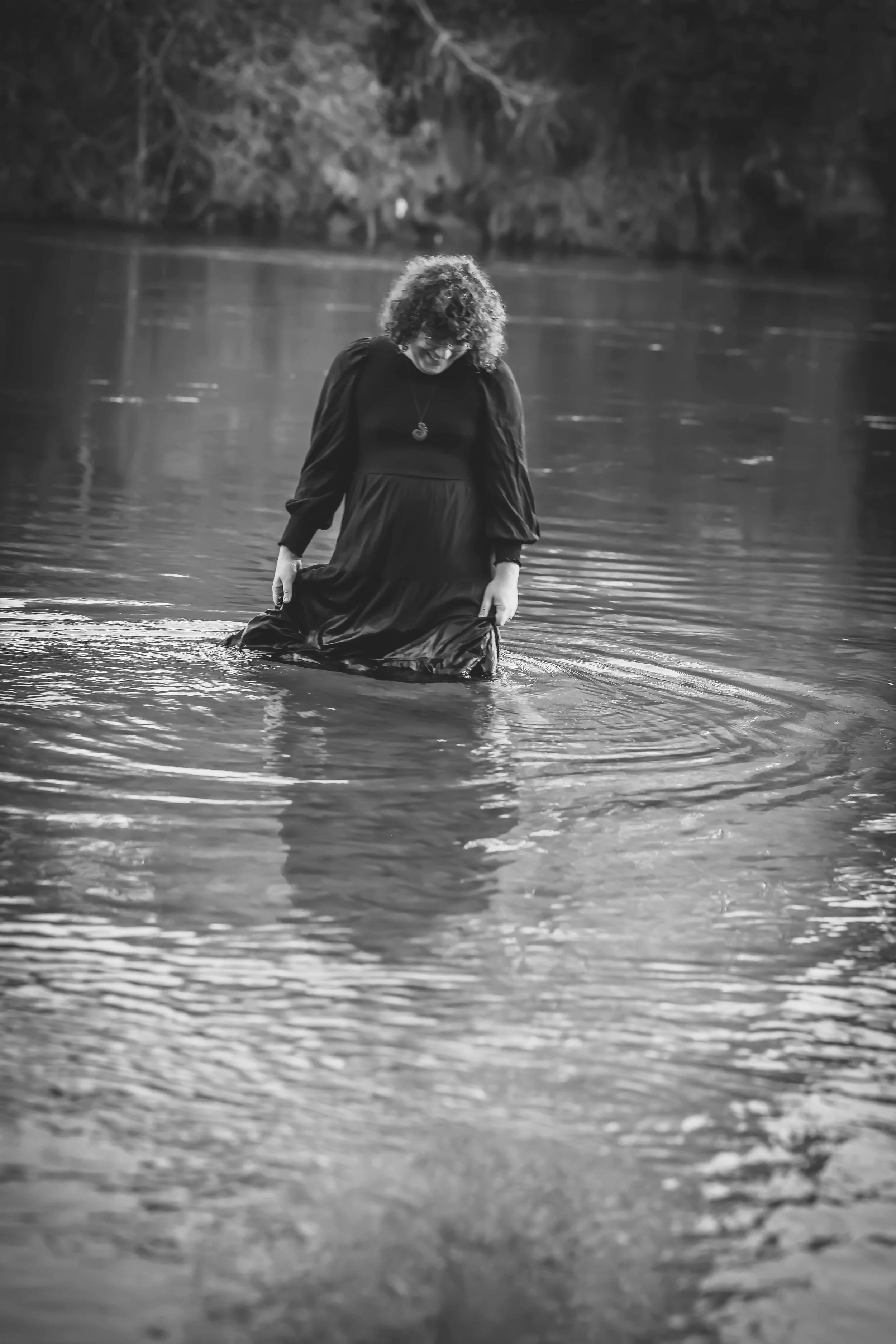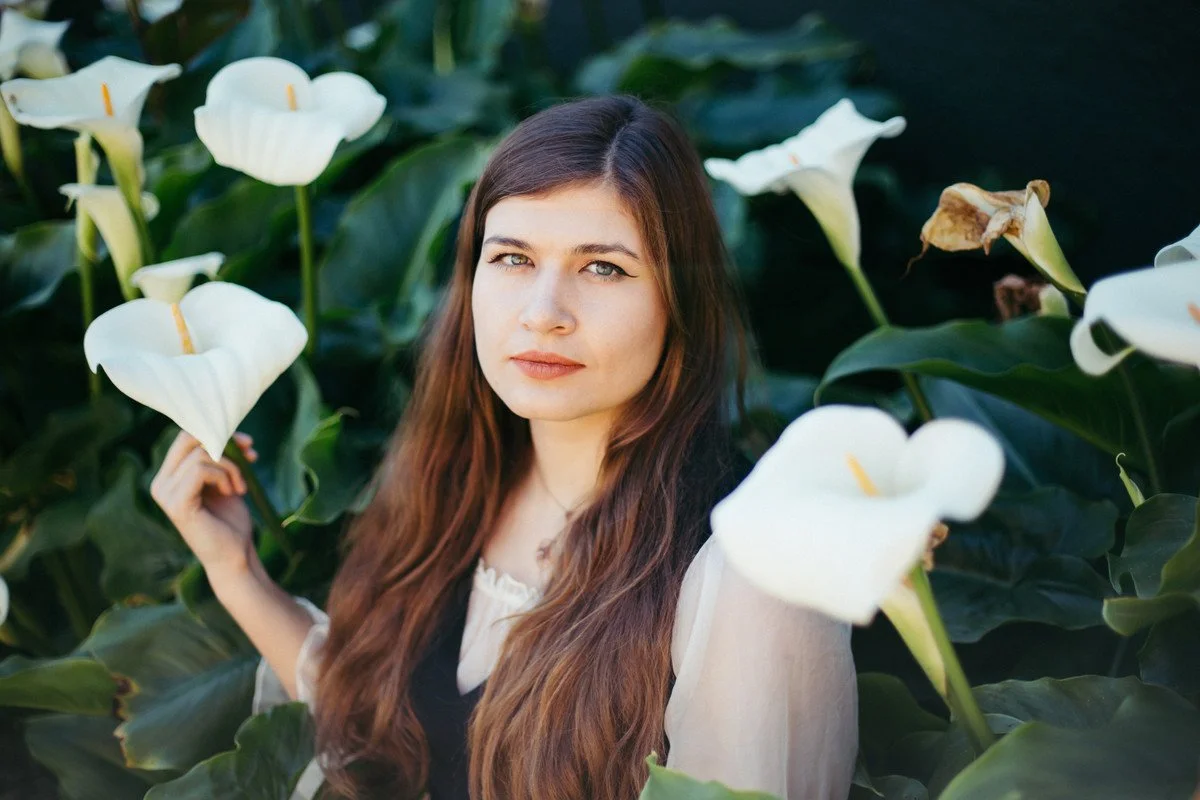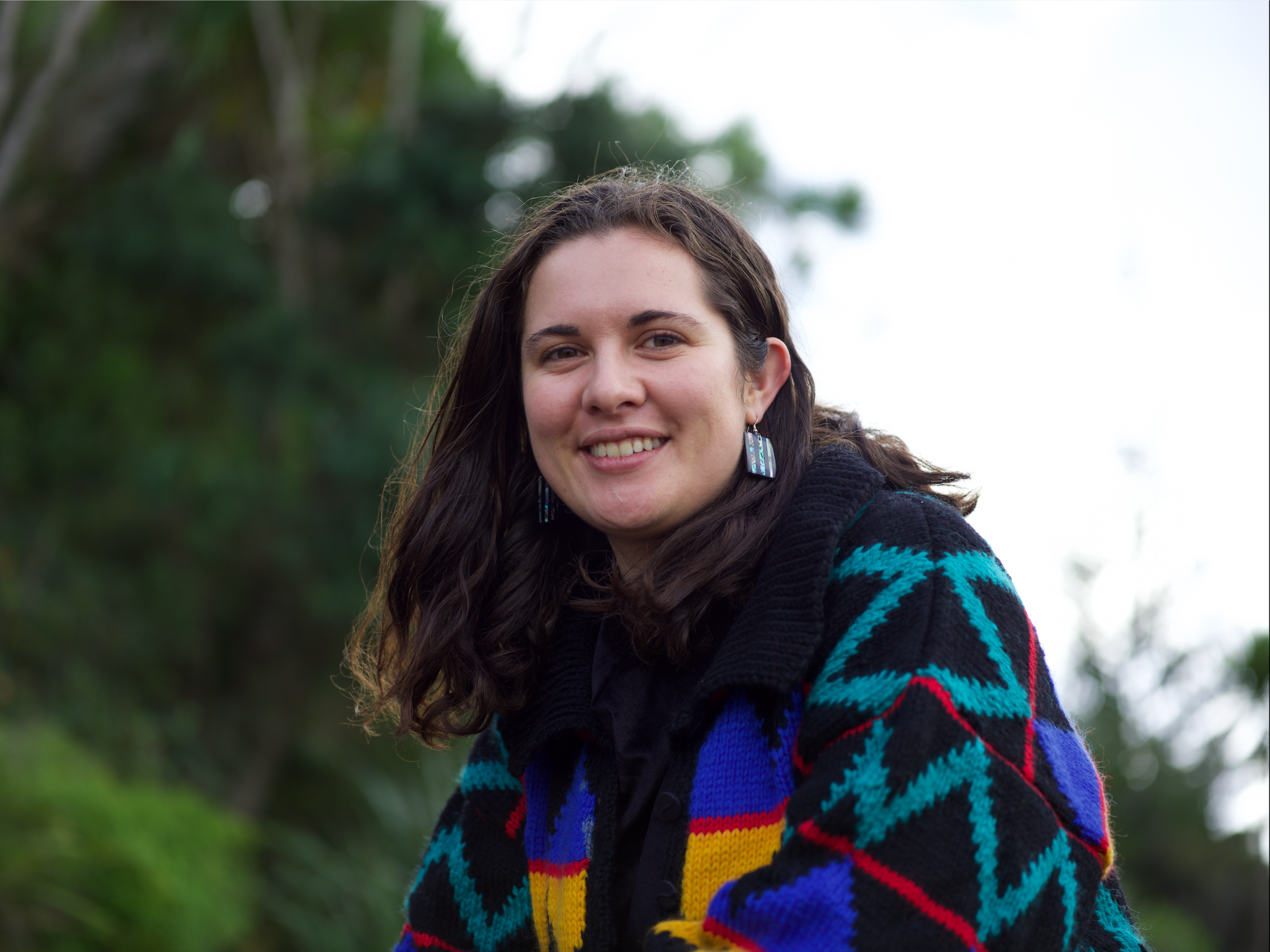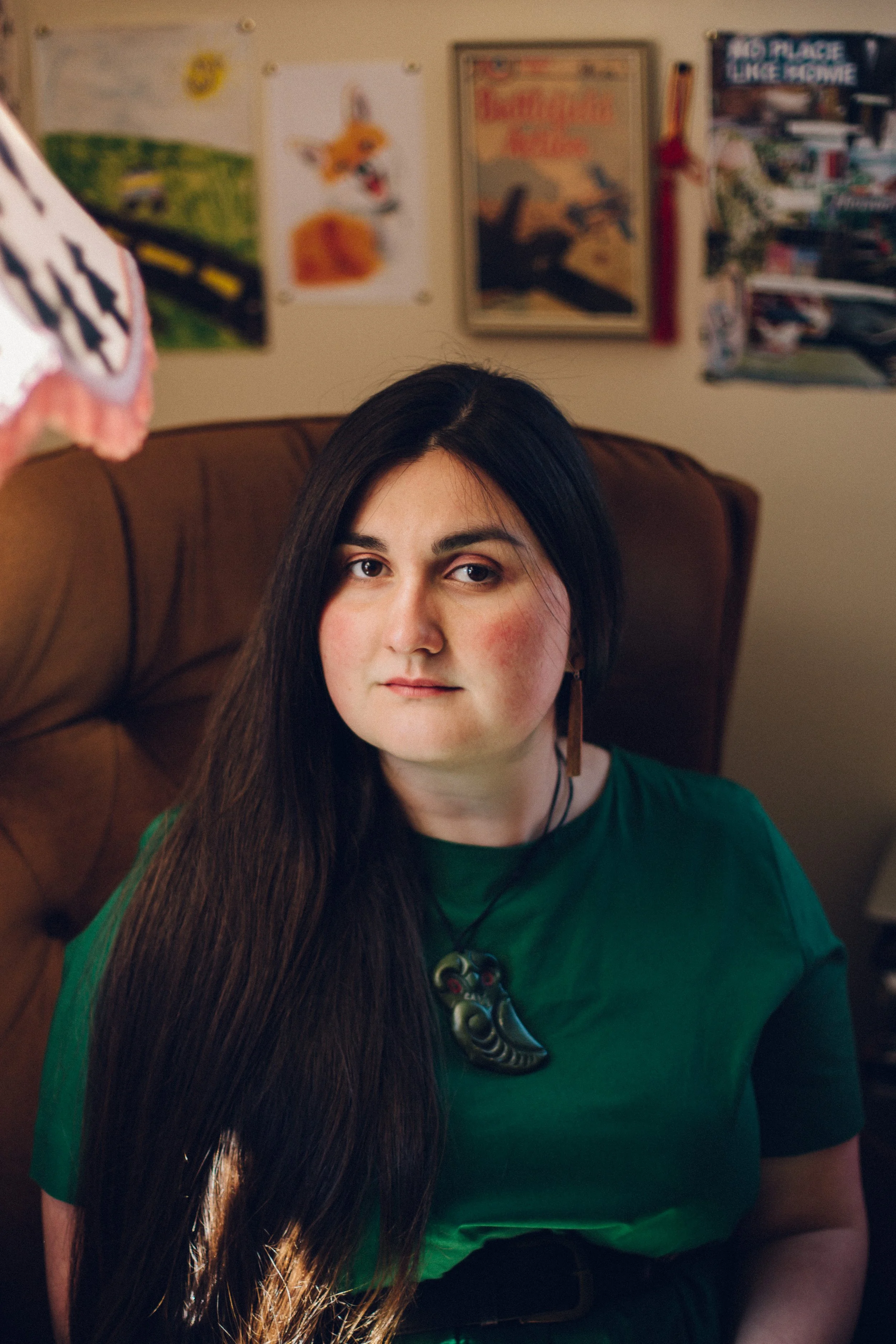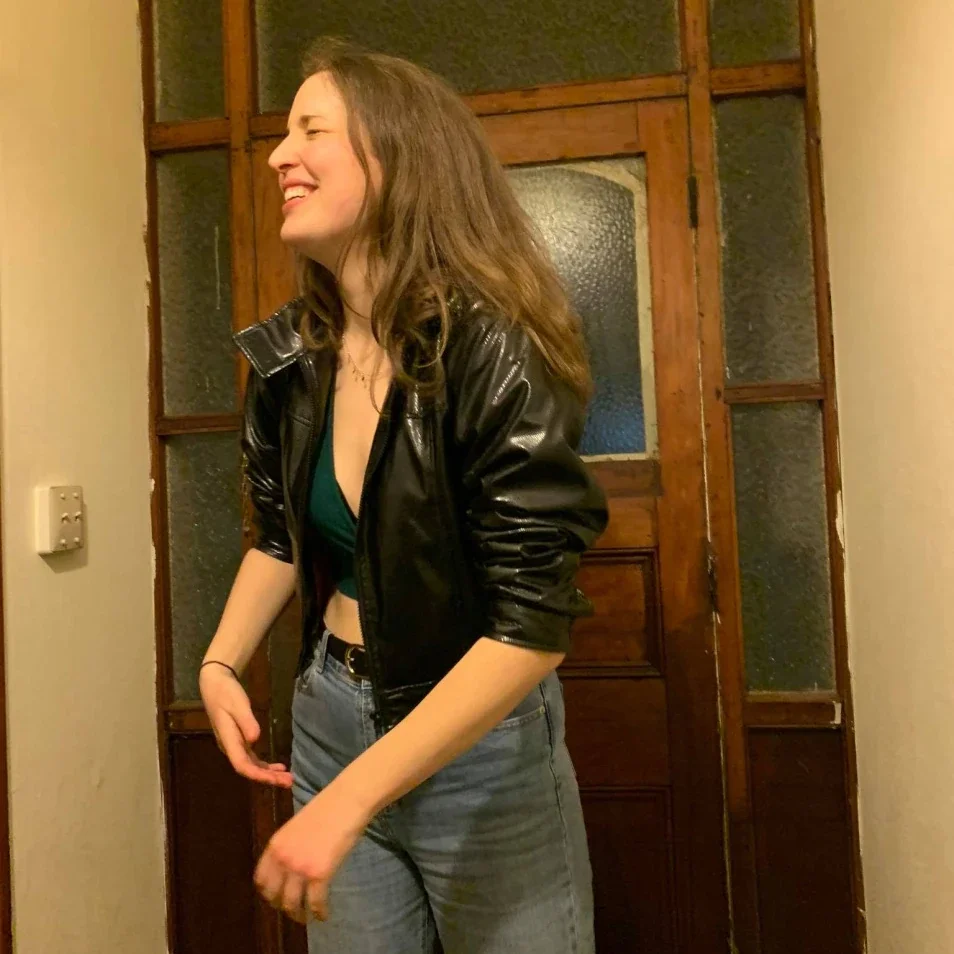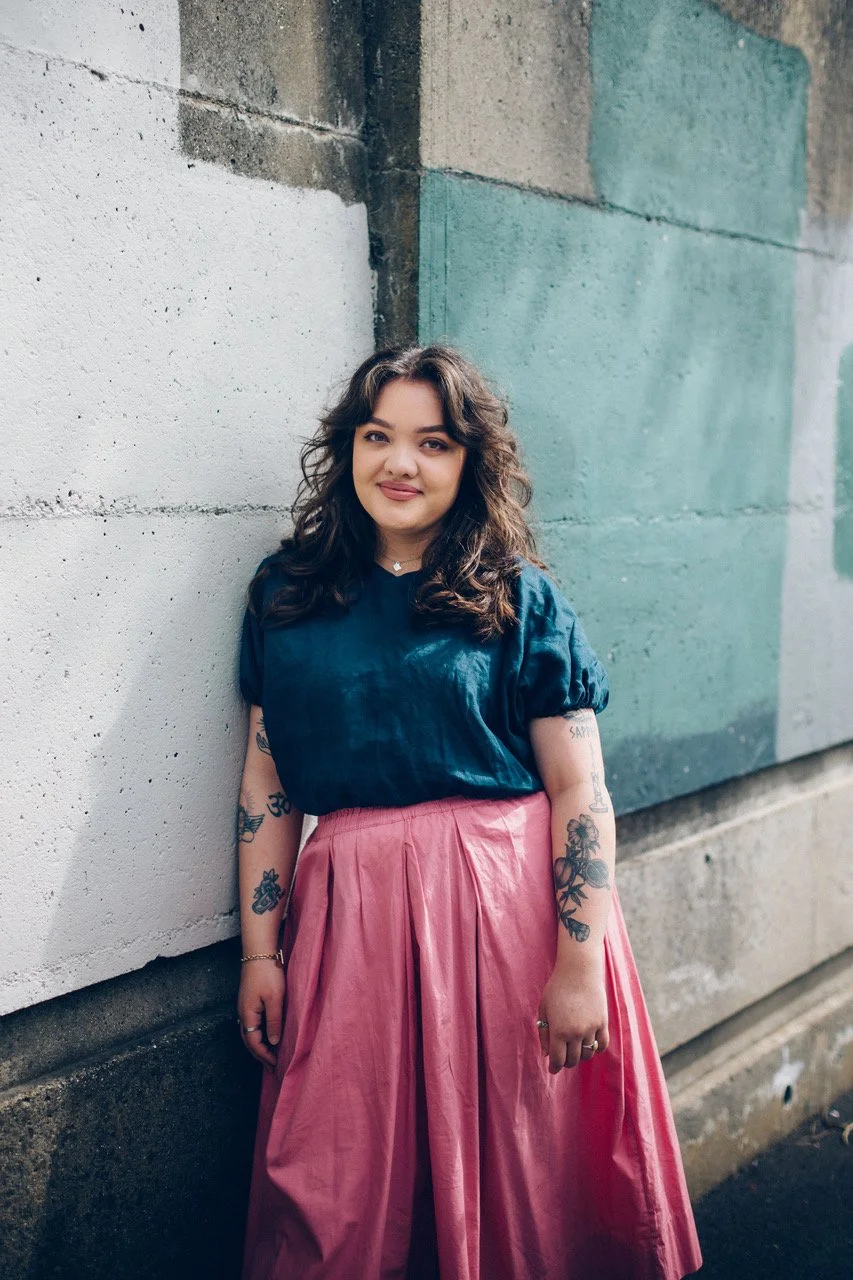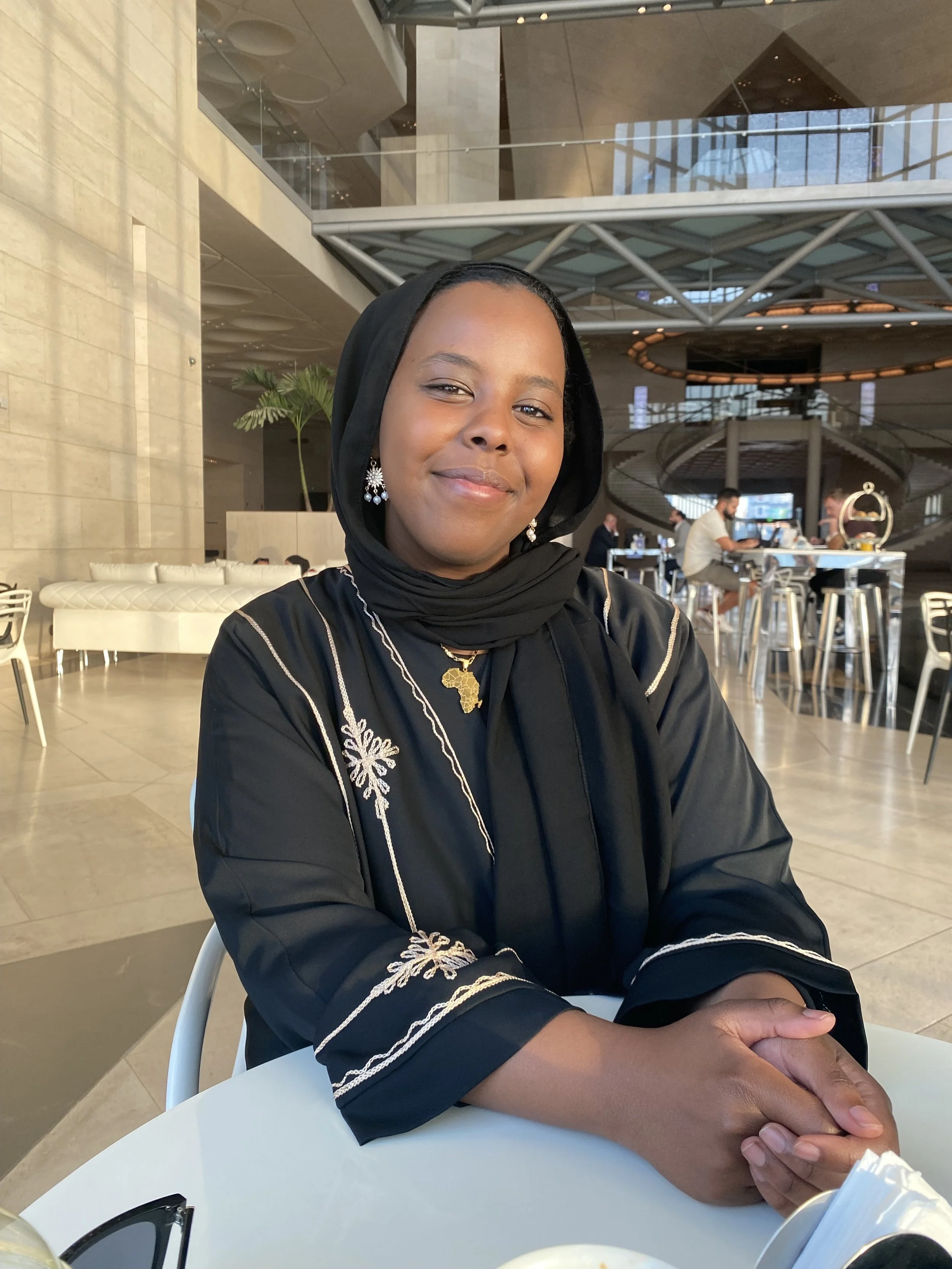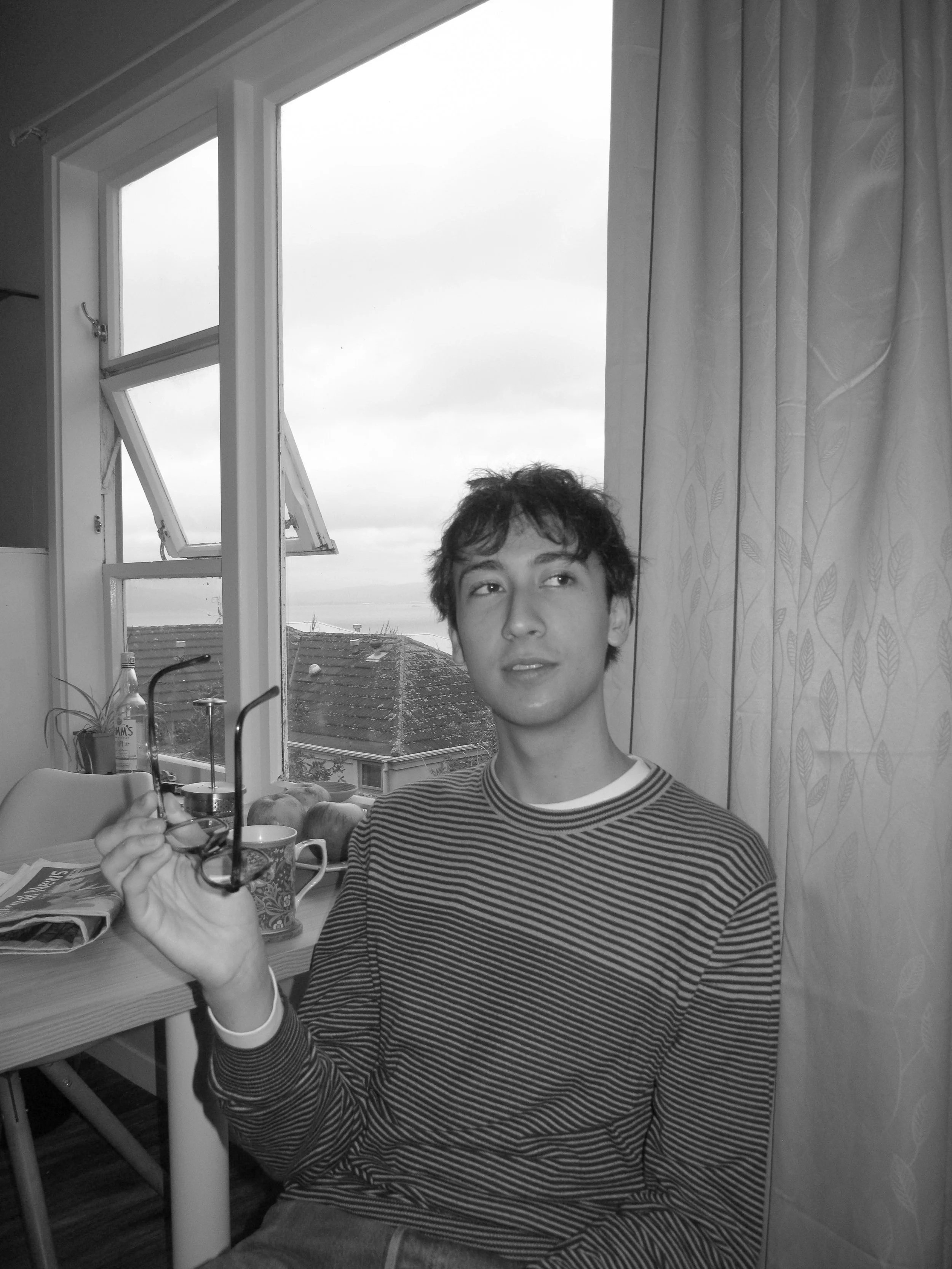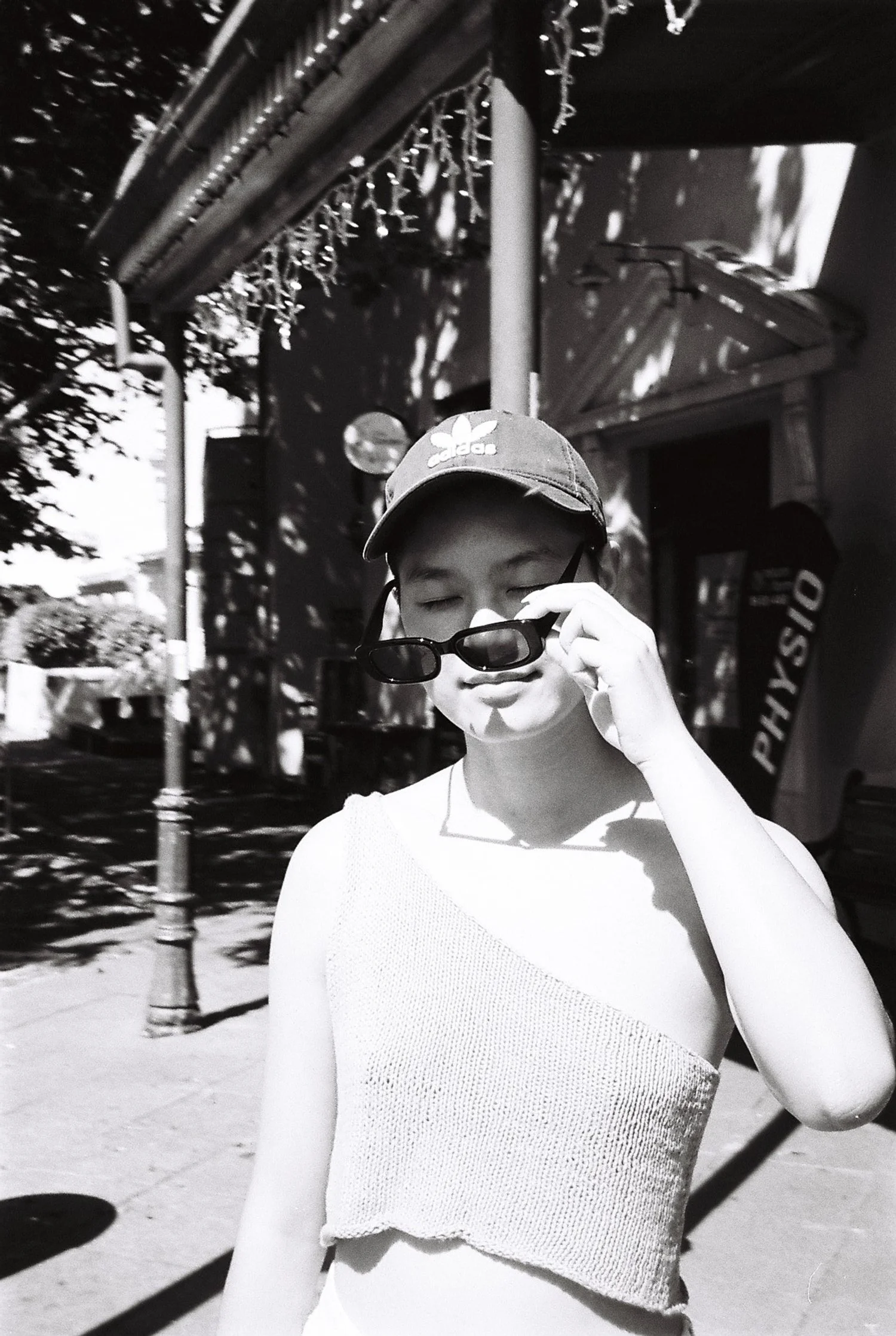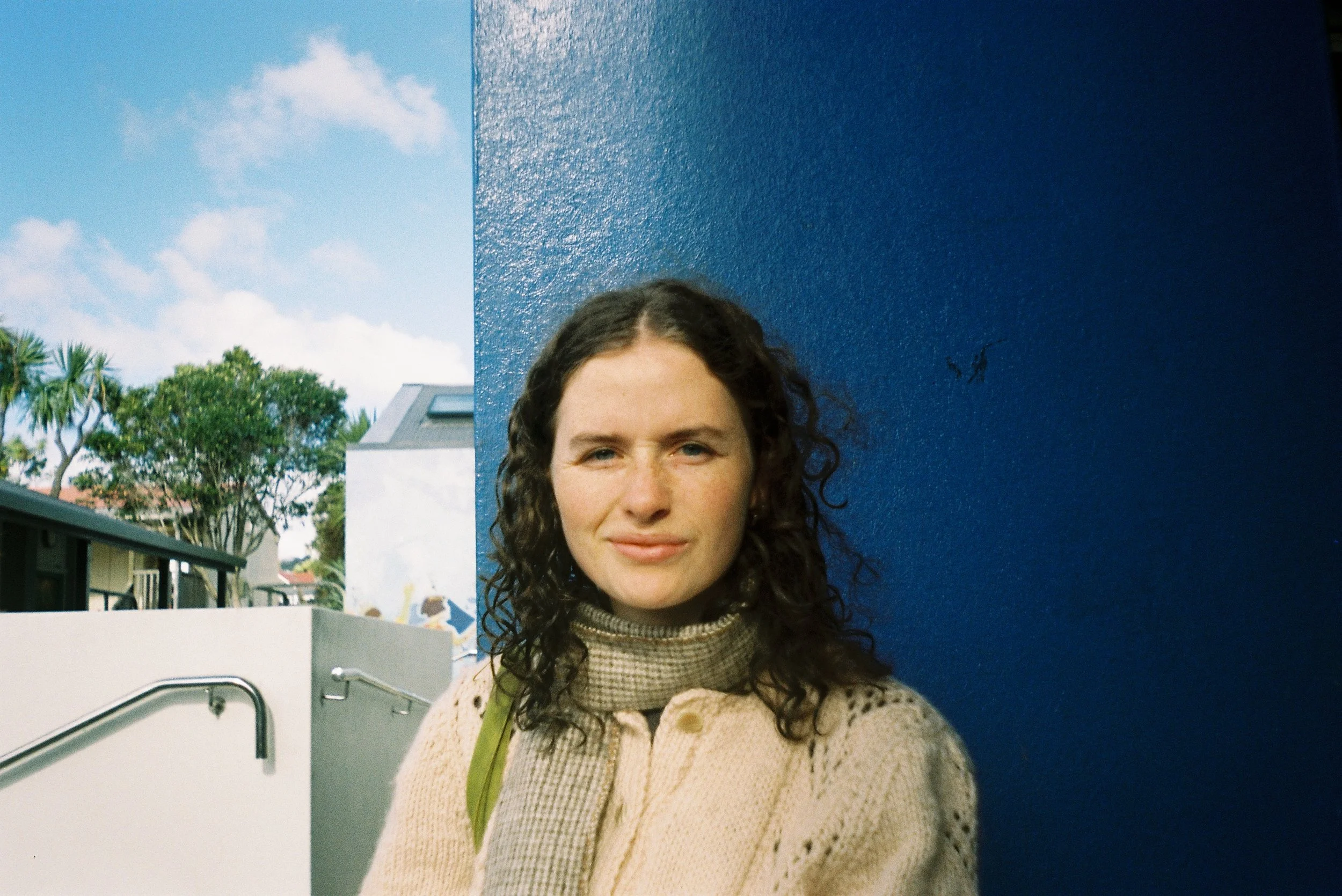twenty starling authors on twenty poems
you wanted to be a writer, so now you are
For our twentieth issue, we asked twenty authors from across Starling’s history to reflect on one of their poems published over the past ten years of the journal and to share their thoughts and memories of that piece. We spoke to: Claudia Jardine, Tayi Tibble, Emma Shi, Sharon Lam, essa may ranapiri, Nina Mingya Powles, Rebecca Hawkes, Sinead Overbye, Cadence Chung, Ruby Solly, Caroline Shepherd, Leah Dodd, Tessa Keenan, Khadro Mohamed, Ash Davida Jane, Jackson McCarthy, Weichu Huang, Pippi Jean, Ada Duffy and Aroha Witinitara.
Claudia Jardine
Killers
(Starling Issue 1)
Photo by Nathaniel Herz Jardine
‘Every summer they put up the signs saying NO FIRES
and every summer, we ignore them…’
The first time I shared this poem I wasn’t sure what I was up to, but my CREW 253 workshop at the IIML had a strong reaction to the orca (and later I remember Harry Ricketts describing the start of the second section as ‘very Tennyson’). The feedback was encouraging. I kept working on the poem. The detail about the ice floes comes from an episode of the BBC’s Frozen Planet. On an Antarctic expedition in 1911, Captain Robert Falcon Scott had recorded an incident involving a pod of orca intentionally breaking up an ice floe which one of his men was standing on. One century later, a BBC film crew caught this tactic on camera. The look of desperation and confusion on the poor seal’s face as the ice floe it is resting on gets smaller and smaller still makes me sad.
I had some misgivings about the publication of this poem a few years after Starling Issue 1 because it is quite naughty, really, to ignore fire restrictions. My humblest apologies to the Tasman District Council Te Kaunihera o te tai o Aorere for any blazes this poem may have caused. Me and the fam still travel to Mohua every summer. I booked a caravan on the beach in Pākawau for our honeymoon last year (different main squeeze lol), and one night the shallows were humming with bronze whaler sharks hunting stingrays! The orca still pass Tata Beach from time to time. The latest news I’ve read is that they’ve been seen offering their kills to humans.
Tayi Tibble
Kaleidoscopes
(Starling Issue 2)
Photo by Pelham Dacombe-Bird
‘Boys make you collapse like stars
folding in on themselves.
At night we watch them burning up
beneath the dark off-casts of this city...’
I wrote Kaleidoscopes when I was twenty years old. I was living in a true aro valley dump with walls made out of wet tissue paper. In the kitchen was an open gaping hole which you had to literally jump over in order to use the bathroom. I worked one day a week printing documents at Warehouse Stationery. Everything I owned I acquired from frequent weekly trips to the vinnies and salvation army. My flatmate Raife and I would describe our weekly shopping trips as ‘doing the rounds.’ If we still had money after, we’d get a cheap mee goreng and a bottle of cleanskin. I was in my third year of university but I skipped most of my lectures to smoke weed and write poetry while Raife practiced his make-up. During an undergraduate paper at the IIML, I wrote a chapbook called Girl/hood which I printed on pink paper and posted on Tumblr but when people requested copies I never sent them because I couldn’t afford the postage. After years of catching the train into town as a teenager, and begging an older cousin to let me in/hook me up with a reading spot at the bar he worked at (to no avail), the same IIML class organised a poetry reading for us at Vic Books — my first reading. I wore a black faux-fur jacket, had microbangs and forced my boyfriend at the time to buy me flowers (instead bought me a pot plant). I started reading around town at the same time Raife started getting booked for drag shows. We’d show up to both events looking like dragalicious, homemade stars.
When Starling published me for the first time, I felt as though I had arrived. I remember the excitement of getting the acceptance and then the excitement of sharing it on facebook to my long suffering family. My nana commented, ‘Ever since you were a little girl, you wanted to be a writer, so now you are.’ Now I am, I thought. I sincerely don’t think I’ve ever felt so accomplished as I did being published by Starling and that’s a big call, not going to lie, I’ve done a lot of cool shit. Kaleidoscopes was the second poem Starling published and it’s a poem that still stands up to me because it has a timeless quality to it which many of my garish, early poems do not (and need not). I have affection for that poem because it’s gorgeous but also because it represents a pivotal time in my life — a time where I felt really confident and free. I don’t believe I will ever be as sure of myself as I was around the time when I was writing Kaleidoscopes because I had to be sure without external validation reflecting my worth or my work back to me. That’s why I will always be appreciative of the first wins I had; a second-hand fur coat and a poem in Starling.
Emma Shi
i wish there was more, too
(Starling Issue 3)
‘there is no alternate universe. if there is one, i have already dreamed it away…’
My poem, i wish there was more, too, was published in Issue 3 of Starling, which was released 8 years ago in January 2017. I think this poem was one of those pieces that just quickly sprung up on my notes app. When I look back at it now, there are definitely some lines that feel clunky to me and could be rewritten. When this poem was published, I was 20 years old and still in university. My writing style was still developing, and I can feel the voice that I was trying to express in this poem. Getting this piece published in Starling was so important to me, because it told me I was heading in a good direction, and it encouraged me to keep on going.
A few months after this poem was accepted by Starling, I was also invited to read my poetry at Starling’s LitCrawl event, an incredible experience where I got to meet Louise and Francis for the first time, as well as other Starlings who would in the future become writers with their own published poetry collections, people I admire, and also great friends. It was so brilliant to be a part of the LitCrawl buzz with an audience that was so eager and encouraging. When I look back on this poem and that time, I think about how much my writing has grown thanks to the support of Starling, and I feel so grateful to the editors for their hard work over the years. Happy 20 Issues Starling! :)
Sharon Lam
Everyone at the Pool Looked Like Ewan McGregor
(Starling Issue 4)
Photo by Benjamin Button
‘Ewan McGregor was doing freestyle
Ewan McGregor was trying to do freestyle…’
First off, congratulations and well done on the TEN YEARS (what?!) of Starling, the space you’ve made and held for a DECADE (again, what??!) and the work you’ve shared through it is incredible.
It is funny to reflect on Everyone at the Pool Looked Like Ewan McGregor – it both feels just like yesterday but also another lifetime. It was published in Issue 4, eight years ago now, in a world before Covid, a world before TikTok, a world before AI…and remarkably alongside the likes of guest writer Chris Tse who since has become POET LAUREATE, and other amazing writers like essa may ranapiri, Sophie van Waardenberg and Rebecca Hawkes who have also continued to write more and more remarkable things. Starling have always been right on the pulse!
It is also funny to reflect on the poem as it was and probably be the only ‘real’ poem that I ever have next to my name (‘real’ here meaning – there are some sort of rhyming words). I was just starting out with creative writing, and giving everything a go – poetry did not come naturally, except for this. The writing process was extremely fast, and came mid-swim in Freyberg Pool, basically fully formed, a singular, chlorine-doused gift. I jotted down the gist of it before I forgot it, and then went over it again a few times, but I don’t remember much other editing. Reading it again now, I can still picture how the water at Freyberg Pool looked that day. Thankfully no horrible revelations have come out since about Ewan McGregor so I can still relate to it (I even went for a swim to think about what to write in this reflection!) (Ewan was not there..)
essa may ranapiri
passing as nonbinary
(Starling Issue 6)
Photo by Kelly Joseph (Ngaati Maniapoto)
‘you tell me a story
all dark-haired and fingerless gloves
about how you were harassed at a supermarket
stuck in some punk-winter
he followed you
from the fresh fruit to the cleaning products
wanting to know the answer
people had their walkie talkies out
to monitor the situation
but did nothing…’
passing as nonbinary was written for a friend, who I haven't talked to in a while. I hope they’re doing okay. But it really was just the story they told me, sometimes the poem is just given to you. The one thing I’m happiest with is the ‘or’ becoming a kind of onomatopoeia for the swinging hoop, which was something this friend would do all the time. They went back to the States but maybe I should try and get in touch again.
Nina Mingya Powles
Mid-Autumn Moon Festival, 2016
(Starling Issue 6)
Photo by Sophie Davidson
‘We look up the Chinese name
for persimmon on my phone, 柿子, we taste the word,
we cut it open, wondering at how it sounds
so like the word for lion, 狮子, lion fruit…’
It's been almost a decade since I wrote this poem and sent it to Starling. Four years later it was published in Magnolia 木蘭 and by then it already felt like it was written by my past self. I started to feel a strange disconnect from almost everything I had written in the past — and there are still some ‘older’ poems I never read at events — but Mid-Autumn Moon Festival, 2016 is one I actually still like reading. I once heard the poet Chen Chen say something that changed how I felt about my early work and prompted me to be kinder to myself. He said that it’s natural to feel cringey about old poems because that just shows you’ve grown and changed as a writer and as a person.
I had completely forgotten until now that the version published in Starling is not the same as the one published in my book. The last six words ended up being cut. I remember trusting my editor at the time, and maybe cutting them did make the poem more interesting, but I love that this other version still exists, too. A kind of alternate ending. When I read this poem aloud at events, and I sometimes still do, I can see the view from the tiny balcony of the room where I lived in 2016, and I think of my friend Louise, who I haven’t seen in a long time.
Rebecca Hawkes
Gremlin in Sundress
(Starling Issue 7)
Photo by Ebony Lamb
‘blinded with dandelion gimme a puff of it
gimme an eyelash kiss gimme ringlets
gimme a morsel of raw
vegan cheesecake gimme this day
my daily bliss…’
Oh! Hello, baby Gremlin! I’m fond of the past self preserved in this work, as for many of the poems I’ve long grown out of like cicada cases. Look at that little bug, rambunctious and buzzy, her shimmery exoskeleton a vintage nude preserved in amber. It’s strange to think of what new shapes I’ve taken since this poem, but also what’s remained the same. My work has continued to deal with desire’s complexities — the risks and delights of gluttony — and an ethos of shame-less-ness that can maybe only live through my poetic speakers rather than my ever-abashed ass. I remember having such fun writing this, just going goblin mode. Mortified hangxiety for the gremlin? No!!!! In the spirit of the cicada wrestling clumsily toward a new self, there are parts of me in here I can’t relate to so clearly now... habits I hadn’t reckoned with, grim chickens who’ve since come home to roost. But sometimes the poem knows things the writer doesn’t yet... like life ‘nonstop’ being in itself a crucial stopping place — a precipice to contemplate.
Revisiting this poem has made me grateful for the enthusiasm of its readers, especially those who made it their business to support early-career writers in Aotearoa. It took me through a lot of firsts. After first taking a twirl in your very own Starling, Gremlin In Sundress made its way into my first chapbook, Softcore Coldsores in AUP New Poets 5, edited by the incredibly generous Anna Jackson. It was my first poem chosen for Best New Zealand Poems (Now That’s What I Call Poetry! Volume 19), by Hera Lindsay Bird — a personal milestone made more meaningful by my education that same year in the impossible subjectivity of curating journal selections, as Nikki-Lee and I had just edited our first issue of Sweet Mammalian. I’m grateful for all the lives this poem got to live so far, which wouldn’t be possible without those who choose to spend their time championing others’ creative work. As Starling’s archives continue to grow, so will stories like this — and the joy of us Starlings encountering our own old works/selves, getting to see how much we’ve been able to grow thanks to being offered this first flourishing place.
Sinead Overbye
The River
(Starling Issue 8)
‘it starts with a drip
drop down
a trickle…’
When I was studying at the IIML, I was fascinated with works that depicted magical or supernatural elements in a realistic way. I had seen a lot of this type of work within stories written by BIPOC authors, and these types of writing seemed to tap into some deeper truth about Indigenous ways of being and experiencing the world. So-called ‘magic’ is a real and tangible part of our everyday lives.
The whakataukī from Whanganui ‘Ko au te awa, ko te awa ko au’ really motivated this piece. I love how this whakataukī encapsulates how inseparable we as humans are of the environment around us – how our wellbeing and survival is intimately intertwined with the wellbeing and survival of the natural world around us. I was trying to bring this idea to life within The River. I wanted the body to become the river in the same way that is referred to within this whakataukī. I wanted to actually illustrate how important that connection is, and how vital our relationship to the world around us is.
The transformation that takes place in the poem is meant to be more than just a metaphor – the character literally turns into a river, her body melting, transforming into something new. This idea of returning to a natural state really appealed to me. Now when I read it, I can see how this journey – transforming from a heartbroken person into a river – also highlights my desire to be reconnected to culture, to the earth.
Cadence Chung
Agent 888
(Starling Issue 8)
Photo by Ralph Brown
‘They all lie like fallen grapes; stewing there in the grass,
the tangy sweetness of haw flakes in their mouths;
tiny fingers tearing into those firecracker packets…’
Agent 888 is a special poem to me. I’d been a writer from a very young age, but after reading Chris Tse’s work in class, I started connecting my writing practice with my heritage as a Chinese New Zealander. The poem is a semi-fictional reconstruction of the escapades I got up to with my cousins. We would traipse around my YeYe’s cluttered house, which was filled to the brim with old Chinese paraphernalia, and pretend to be spies. I think that those maximalist sprawls of objects, combined with the warmth and kindness of my YeYe, always cooking or playing with the children, were formative in creating the person and poet I am today.
Starling was one of the first magazines I was published in, and I think I wrote Agent 888 when I was around 15. I remember nervously showing up to the Issue 8 launch in some tragic little blue suit thing, terrified of these seemingly godly older poets. But I soon found out how welcoming the community is, and I’ve loved attending literary events ever since.
Ruby Solly
Rakatahi-Tū
(Starling Issue 9)
Photo by Ebony Lamb
‘You say there is dirt under our nails
I say there is whenua under our skin…’
Despite knowing that Starling is now an institution of rakatahi thought and writing, that has lasted long enough to see multiple generations of young people use their words and voices to show us who they are amidst the changing world... I didn’t realise how much rereading my early Starling poems would affect me, and show me how much growth has happened in this time.
That growth is also twinfold (if not more complex again). During this time, I have nurtured experiences through myself that mean that I am no longer a rakatahi. I think one thing about growing up is that you don’t realise it’s happening until you feel it hit you all at once. A sort of ‘the last time I did this, I was a young person. I thought like a child becoming something else. But this time, I am holding the reins, and I understand their weight’. It’s like going back to your primary school and feeling almost like a tipua of that place, of all its concrete and colour. Like you’re haunting or helping the kids who go there now just through letting yourself walk back through and remember how things have changed.
Re-reading Rakatahi-Tū felt a lot like walking through that old school for me. Not a rakatahi anymore, but someone that holds that energy inside me while being more layered and in many ways, more jaded than I was when I wrote this poem. But I look at the tenses I’ve used, I look at how this poem is set in a future that for me has now largely passed. I’ve received my moko ‘rising from underneath the skin’, whereas here it was just a dream to me. I’ve slept in so many wharenui with all my friends, many of whom are writers, many of whom have written here. I’ve reached out for their hands in reassurance, including the night before I got that moko, too.
But another thing this poem shows me is the growth of the nation, or rather the expansions and contractions of it as we try to birth a new Aotearoa that holds on to all the best parts of what it once was, and hopefully slowly sheds the rest. This poem is about Ihumātao, but now in this day it feels like it could be about the whole country. The dirt under my nails in this poem is not the same dirt that appears there now. But the sentiment is the same. I wish I could go back into the classrooms of this poem. I wish I could tell myself how much dirt I was really going to have to move, and how little of it would make any difference. But that would be telling, and if I can gather anything about my younger self from this poem? Well, I don’t think she would have listened to me anyway. She would have just kept going, with all her dirty-nailed friends beside her. Which is exactly what she did.
Caroline Shepherd
Crush Poem!
(Starling Issue 10)
‘I like you!
I like you so much I lie face down in the bucket fountain and don’t even move when a bunch of twelve-year-old boys spit on me on their way home from school!’
Oh Crush Poem, you were truly my best Hera Lindsay Bird impression. I wrote this when I was nineteen, studying and working part-time at KFC while living in a tiny two-bedroom place with my best friend. That year I had an absolutely terminal crush that nothing could fix, so was writing some of the worst stuff imaginable just trying to talk myself out of it. I wrote so much poetry back then, trying to figure out how line breaks worked and how many jokes I could fit in. I took nothing more seriously in 2019 than making people laugh, and that worldview really comes through here, especially in the last line of stanza 6 (which is essentially the poems thesis statement) this does not impress you! This makes you laugh! Which is better.
Reading this poem at events was always sort of a relief because I hate public speaking but there is simply no way to read this poem and sound normal, so I was completely freed from that obligation. I would basically just be shouting at everyone for three minutes. I was very lucky to have it selected to be at Poetry Karaoke at Cuba Dupa one year and the thought of other people reading it, yelling at various strangers about their simply hopeless crush, filled me with joy. The whole thing reads so stupid and pathetically true, I hope it made you laugh. It’s what I wrote it for.
Leah Dodd
tether
(Starling Issue 11)
Photo by Ebony Lamb
‘we’re doing it all together! eating
brown rice porridge, washing
dishes and doing laundry, watching
a poor dead blackbird’s feathers
ruffling gently outside we can see
honeysuckle growing out
of concrete smell its sweet air
see the washing lines twist punctuated
with pegs around each other…’
This is a poem from 2020. tether is a lockdown poem to be sure, but lockdown is secondary to the at-home-with-a-baby-ness of it, which sums up that year for me. It was a weird time of living in a flat that shared many qualities with a cave, being swallowed up by early parenthood, both succumbing and resisting to that, reading A Ghost in the Throat very closely, and being 21. I was a baby too! Parts of this poem I probably wouldn’t write now — language I feel I’ve ‘outgrown’, maybe, but also I wrote more freely then than I do at the moment. Here I was, and still am, very interested in the concept of inside. Living in a tiny space and noticing as much as there is to notice within the pockets inside the pockets. A huge highlight about this poem is that my friend Ella, also a poet, really likes it! When I was putting Past Lives together I ended up including tether mostly because I knew it was meaningful to her. I’m glad I did, because the further away I get from this poem, the more I feel it is really special to me too. I was enclosed and isolated and responsible for another person’s best possible start to life. Time moved fast. I could already see myself looking back with fondness and heartbreak, now here I am doing exactly that.
Tessa Keenan
Taranaki
(Starling Issue 11)
‘Trenches look like
the ground’s small intestine
cut in half.
Arising and digesting…’
I wrote the first draft of Taranaki when I was doing the Undergraduate Poetry course at the IIML in 2020. The exercise for that week was to write our own versions of Wallace Stevens’ ‘Thirteen Ways of Looking at a Blackbird’ (‘[xxx] ways of looking at [xxx]’). This poem was originally called ‘A collection of trenches’ and by my count there are about five trench-like things in the final poem.
At the time I wrote this poem, in a project for another course, I was identifying pā and fortifications in the Ngāmotu-Okato area on Google Earth and researching inter-iwi battles in Taranaki from the Musket Wars era. In Taranaki, Waikato, and many other rohe throughout Aotearoa, we are surrounded by trenches and battle sites.
I’ve been lucky to grow up with expert family members who have shown us around many significant places and shared stories of the New Zealand Wars. When my cousin Lauren was writing her New Zealand Wars guidebook, she and my uncle Danny took our whānau on a journey around Taranaki battlegrounds. We traced some sites of the war against Tītokowaru and the Taranaki wars of 1860-61, from Hāwera to Waitara. Lauren’s book is now out in the world (Toitū Te Whenua: Places and People of the New Zealand Wars) and is a great resource for those wanting to know about and visit (where appropriate) the trenches around them.
Khadro Mohamed
Pink Lakes
(Starling Issue 12)
‘even now, the feeling of emptiness sticks to me
like hydrangeas on the inside of my veranda in the spring
like the deep brown undertones of my skin
if only baba could tell them that the earth that once
covered our home gave birth to flower fields
and entire forests that could swallow science…’
I wrote the poem Pink Lakes when I was only just starting to discover my voice in poetry. I was incredibly sad when I wrote it, and I think that’s obvious from the way the poem starts and ends. I hated that the only thing people knew about the land I was from was coloured with so much negativity: war, drought, famine. I wanted to change that, to challenge people. I guess I was discovering who I was and I felt so unseen back then. I think that’s one of the reasons I continue to write poetry, I feel seen when I get the words out onto a page. I love being able to pick myself apart. This poem lives in my poetry collection We're All Made of Lightning, but its first home was in Starling Issue 12. Just before I submitted it, I read it at my first ever poetry reading. It was a really cold Wellington night and Enjoy Gallery was putting together a line up of new poets. I read ‘Pink Lakes’ for the first time, I will never forget how shaky and uncontrolled my voice was that night. But many years later and it is still one of my favourite poems to read, I love the way each sentence feels in my mouth. I love the imagery and I love that this poem opened my eyes to the possibilities of poetry.
Ash Davida Jane
in this city
(Starling Issue 13)
Photo by Ebony Lamb
‘in this city nobody has a car
so you have to key their bike
you have to walk down the street past
all the people you’ve been in and out of love with
and all the people they’ve been in and out of love with
and so on…’
While I wrote in this city about a particular ex who used to cycle everywhere, I was thinking about how poems written in a specific moment can shift and change to be about other things or other people over time. It’s a hopeful idea, like Lucy Dacus singing in ‘Night Shift’, ‘In five years I hope the songs feel like covers / dedicated to new lovers’. While the emotion is captured in the poem, the reality of it will soften and pass over time.
At various readings I’ve introduced this one by saying it’s my ‘Wellington poem’, which does ring true. There’s something about the smallness of Te Whanganui-a-Tara’s population and how intertwined people are that if you live there long enough it can feel like you’ve dated everyone, or at least everyone’s ex. That can feel claustrophobic but there are elements that I like about being so connected to everyone. In an ideal world, people have to treat each other decently when everyone knows everyone. As I think you can tell from the poem, it doesn’t always work out like that.
Jackson McCarthy
The Earth
(Starling Issue 16)
‘With my first serious lover, it was just like Samson in the Bible, though we both knew there was no Heaven. I had never lived in a building before, only houses, which coloured and flavored the night in unexpected ways…’
I could tell you the exact set of steps I was walking up when I first heard of this poem. All my best ideas come to me while walking. When I finally got to where I was going, Cadence Chung was there (we study together) and I was like, Oh my God, I have something, and started writing it down in the middle of class. I was thinking mainly about my beautiful friend who had beautiful long hair at the time and I was thinking about ‘Samson’ by Regina Spektor, which I love for how easily it spins a myth about female betrayal into one instead about male abdication. Good on you, straight people! It was my first year of university and I was living in the halls of residence — that’s where some of the poem’s imagery comes from. I was also thinking about a hotel stay the year before for Frank’s birthday. Frank is not my beautiful friend but he has something going for him in his own way, of course. So I let myself go where the thoughts took me. I trust my dreams and visions and know I would never lead myself astray. Some people think this is funny or shows my age but to be honest I just feel bad for them. At the same time, however, this is a deeply narrative poem (I was reading some James Tate), and it would be a mistake to read it or anything I write as autobiographical. It’s in fact embedded in a sequence of seven prose poems called The Father, whose speaker often makes tragicomic commitments to art over life. This speaker is not me, even if the materials of my life make their way into his stories, even if he embodies some of my worst traits. Selection is the essential question. Sometimes I think being a writer must be like being Jackson McCarthy at the florist: no, not that one, not that one either — ah, this one’s just right! Taste is the only gift and the rest is work. I feel extraordinarily grateful to Starling for being one of the first magazines to publish, support, and advocate for my poetry.
Weichu Huang
Yvonne Rainer’s No Manifesto
(Starling Issue 16)
No to spectacle.
No to virtuosity.
No to transformations and magic and make-believe.
No to the glamour and transcendency of the star image.
No to the heroic.
No to the anti-heroic.
No to trash imagery.
No to involvement of performer or spectator.
No to style.
No to camp.
No to seduction of spectator by the wiles of the performer.
No to eccentricity.
No to moving or being moved.
- Yvonne Rainer (1965)
I first encountered Yvonne Rainer’s No Manifesto in 2019 as a first-year dance student and was immediately taken with its structure of rejection. Over the years my relationship to it has fluctuated; sometimes I crave a more un-limited methodology for creating, and often I am in love with the camp and spectacle of dance that Rainer denied in her work. Despite this, I’ve remained fascinated by No Manifesto as a piece of text — aesthetically, and by the political implications of saying ‘no’.
I wrote Yvonne Rainer’s No Manifesto at the beginning of 2023, after I had graduated from dance school and was coming to terms with some of the experiences I’d had during my training. My second and third years of study were in 2020 and 2021 and Auckland was heavily impacted by lockdowns and physical distancing restrictions, which created unique challenges for dancers. My cohort missed out on opportunities while paying high tuition fees and we committed a lot of time and energy to being angry. I was also becoming increasingly frustrated by what I perceived as the euro-centricity of ‘contemporary dance’, particularly in the academic sphere. Finally, ongoing traumatic interactions between myself and leadership figures in the dance community had heavily impacted my relationship to my practice and my mental health.
The early drafts of Yvonne Rainer’s No Manifesto were a way for me to document and release hyper-specific feelings and events that had shaped much of my last year of study as well as my first year as a graduate. In this process I found silliness and catharsis. Moreover, writing this poem allowed me to engage in a praxis (I use this word in Yvonne Rainer’s No Manifesto as a joke. I think it’s a funny word, like ‘liminal’) where dance exists in the things we write and say and think, expanding my capacity for creating.
The last section of the poem references an article I read in the New York Times titled ‘How We Use Our Bodies to Navigate a Pandemic’. With no disrespect to the author (we were all, globally, trying to reframe and redefine the place of art in a locked-down society, and the article makes good points about movement being precious), I found the comparison between choreography and social distancing a bit ridiculous. People were dying, and dancers wanted to write about how walking around in public was a live improvisation. At the same time, I believed wholeheartedly in the truth of this, and thus there existed a dichotomy from which I drew slightly absurd statements. The line ‘If we do not move at all’ is satire but it also felt extremely real at a time when our movements were heavily regulated.
Looking back on this poem more than two years later, I feel a tenderness towards the version of myself that wrote and thought these things. I’m incredibly grateful to Starling for allowing me the chance to revisit this work and the stage I was at in both my life and creative practice in 2023. I deeply, deeply love Starling and I love dancing more than anything else in the world. Happy 10 years of Starling <3
Pippi Jean
The Distances
(Starling Issue 17)
‘Sometimes the distances grow.
Against the wall, under the table,
my shoe between your shoes.
The waiter brings us a candle and
the little lights surface on your face
like bottom-of-ocean patterns…’
Sooo I remember how scary it was to read this poem out!! I thought it would be even worse than leading karaoke at year 9 assembly, because at least the year 9s are waiting for it to be over but at a Starling launch everyone listens very intently and claps when you finish speaking and gives you a bit of cheese and cracker after and says good job. It feels like doing a skit for your family on Christmas Eve. Everyone knows you and wants the best for you and you feel shy and proud and embarrassed and very yourself all at once.
I remember standing up to speak. My hands were shaking so hard. My girlfriend Erin was there, who the poem’s about. The poem is basically about when we started dating and I had started to go from asking, what if it goes wrong? to what if it works out? That was such a weird place to be in. I remember being afraid to tie my shoelaces too slow when we were heading out somewhere, or sneeze, or admit my top Spotify Wrapped genre was UK rap. But at the same time I felt this big, growing calm, like a sea in the distance. What I really treasure about Starling is you get the opportunity to be brave. Like, to speak your mind. You know you can share your best shot as a young writer at things like love poems and still get a bit of cheese and cracker at the end, so you do share them, and I’m really glad I did.
Ada Duffy
connecting to known networks
(Starling Issue 19)
‘under the glare of a two-walled cubicle
eyes thick like lard, wide but unseeing
index in futile plea to unstick the space bar
then rearrange jargon, make hours move
take the stairs to the staffroom
in reward, check the marae on Google Images
that wooden wave in the sea of the celestial
is dulled by a singular cumulus smudge…’
I wrote this poem while researching Indigenous Cultural and Intellectual Property. I was looking at taonga held overseas in various museums, often with scant information about their whakapapa. It was a strange experience, I could feel the mauri of these taonga through a computer screen. This mahi made me think about my marae and how distant they felt at the time, despite one being a twenty minute drive away.
In thinking about our taonga displaced overseas and my own sense of displacement, I imagined travelling through my computer to my marae, exploring what this ‘cyber ātea’ space might look and feel like. These whakaaro are inspired by Rachael Rakena, a Ngāi Tahu artist who has explored the Internet as a fluid site of reclamation. I too am interested in how the Internet functions for Indigenous people engaging with our culture, and its potentials for reconciling and rupturing notions of identity. The internet is not without its shortcomings (shock horror), considering how fundamental kanohi ki te kanohi/physical connection is within te ao Māori. However, physical engagement is not possible for many. This poem invites us to imagine any and all connections to our marae and ancestral places we can conjure.
Aroha Witinitara
Passing
(Starling Issue 20)
Photo by Trinity Thompson-Browne
‘We were almost outside when the woman stepped into our path.
Mum and Gran stopped to say hello, so I had to stop too.
I stood there sweating, adjusting the airbed in my arms as it started to get heavy.
Then the words:
and who is this dashing young man?’
I wrote Passing at Ruri Rongoā, a biweekly online gathering of takatāpui poets facilitated by Hinemoana Baker. ‘Ruri’ means ‘a love ditty, poem or jingle’ and rongoā is something healing or medicinal. In the session where I wrote ‘Passing’ we spent the first half reading essa may ranapiri’s poetry, and in the second half we did some writing with a prompt based on the poem.
I was really entranced by essa’s repetition of ‘or’ at the end of their poem ‘passing as nonbinary’ and I instantly knew that I wanted to incorporate something similar with the word ‘out’ because to me ‘out’ sums up a lot of experiences I’ve had that sit at the intersection of being queer and Māori, especially in the current political climate. I really enjoy spending time at Ruri Rongoā and all the poems that I’ve written there have a sense of fun and intensity that I haven’t been able to tap into elsewhere. I shared the first draft of Passing at Ruri Rongoā and I’m thankful to the other Ruri Rongoā poets for shaping the poem with their kindness and feedback.
Claudia Jardine is an Ōtautahi-based poet and musician who works at Scorpio Books (the dream). Tayi Tibble is the author of Poūkahangatus and Rangikura (Te Herenga Waka University Press), which are also published by Knopf in the US and Penguin in the UK. Tayi's work is widely anthologised and has appeared in Best New Zealand Poems, Granta Magazine, Alta Journal, Literary Hub, and The New Yorker. Emma Shi is a writer based in Pōneke and is the editor of Lemon Juice, a zine series on poetry form and breaking the form. Sharon Lam is an architectural designer, currently working at the V&A in London, and the author of Lonely Asian Woman (Lawrence & Gibson, 2019). essa may ranapiri (Ngaati Wehi Wehi, Ngaati Rangiwewehe, Ngaati Puukeko, Clan Gunn | they/ia) is an uri or a person or some shit. They will write until they’re dead. Nina Mingya Powles is the author of the poetry collections Magnolia 木蘭 and most recently, In the Hollow of the Wave (Auckland University Press). Her essay collection Small Bodies of Water was published in 2021 by Canongate and she has also published a short food memoir, Tiny Moons: A Year of Eating in Shanghai (The Emma Press, 2020). Rebecca Hawkes is the author of the poetry collection Meat Lovers (AUP) and the chapbooks Softcore Coldsores (AUP New Poets 5) and Hardcore Pastorals (Cordite), and co-editor of Sweet Mammalian. Sinead Overbye (Te Whānau a Kai, Ngāti Porou, Te Atiawa) is a researcher and writer who lives in sunny Ōtaki. Her work has been published with Starling, Sport, Turbine | Kapohau, The Pantograph Punch, RNZ and other places. She has worked as an editor for Stasis Journal, Starling and Awa Wahine, and was a writer in residence at the Michael King Writers centre in 2022. Cadence Chung is a poet, composer, and classical singer from Te Whanganui-a-Tara, Wellington. Ruby Solly (Kāi Tahu, Waitaha, Kāti Māmoe) is a writer, taonga pūoro practitioner, musician, composer, and doctor of public health living in Pōneke. She has two books of poetry; Tōku Pāpā (2021) and The Artist (2023) both of which were long listed for the Ockham Book Awards. She is currently working on a verse novel version of her doctoral thesis in the use of taonga pūoro, Māori instruments, as rongoā. Caroline Shepherd recently watched every single Tom Cruise movie ever made, and for some reason wrote about it for The Spinoff. Leah Dodd is a poet living in Te Whanganui-a-Tara. Her first book of poetry, Past Lives, was published in 2023 by Te Herenga Waka University Press. She is currently writing a second. Tessa Keenan (Te Ātiawa) is based in Te Whanganui-a-Tara, and you can find her writing in various Aotearoa publications including AUP New Poets 10, Starling, and The Spinoff. Khadro Mohamed is a writer and author from Wellington. Her debut novel Before The Winter Ends can be found in all good book stores across the motu. Ash Davida Jane is a writer, publisher and reviewer from Te Whanganui-a-Tara, currently living in Naarm. Jackson McCarthy is a poet and musician from Auckland currently studying in Wellington. He is of mixed Māori, Lebanese, and Pākehā descent. His work has been published in Ōrongohau | Best New Zealand Poems, Landfall, Starling, The Spinoff, and elsewhere, and he serves as an editor at Symposia. You can read more of his work here. Weichu Huang is living, laughing, loving and looking for a job in Tāmaki Makaurau. Their writing is an extension of their dance practice. They prefer the term ‘undisciplined’ to ‘multi-disciplined’. Pippi Jean is twenty-two years old and right now she’s traveling the west to east coast of Canada disturbing locals with how she says ‘garage’ and ‘thanks heaps’. Ada Duffy is a writer of kāi tahu, pākehā and indo-fijian descent. Their writing is sustained by conversations with the whenua. Aroha Witinitara (Ngāti Kahungunu ki Wairarapa) is a student and poet living in
Te Whanganui-a-Tara.

